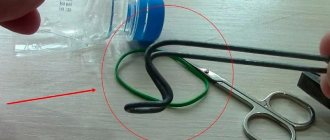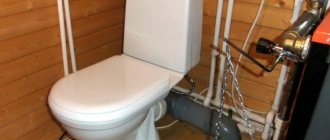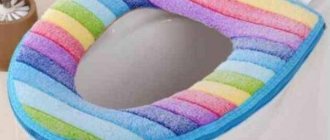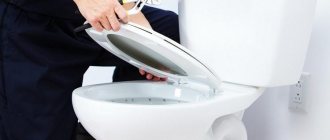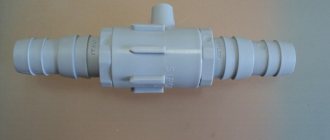Despite the emergence of a mass of means and methods aimed at exterminating rodents in the house, a considerable number of ordinary people prefer to use effective and time-tested methods, for example, a device for catching mice, traditionally called a mousetrap.
To catch small rodents, it is important to know: how to properly load a mousetrap, choose the appropriate bait and place to install the trap. Devices of equal efficiency can be purchased at specialized retail outlets or made with your own hands.
How to catch gray pests
To catch rodents, manufacturers offer several types of devices:
- mechanical mousetrap;
- live trap for catching mice;
- containers, cages;
- electric mousetrap.
How the simplest and most accessible version of the trap works:
The mechanical device consists of a clamp, a trigger and a holder. All metal elements are mounted on a wooden plank; Before starting the “operation”, put on gloves. Mice and rats smell well, understand that a person has been here, and do not touch cooked food; To charge the mousetrap, take bait from TOP - 7, put it on the trigger
Check whether a piece of lard or bread is securely fastened, otherwise the cunning rodent will carefully take out the treat and run away without affecting the trap mechanism; the next step is to cock the clamp. Carefully place the holder and insert the element into the trigger. It is important to ensure that the holder slides off easily at the slightest touch; It is not always possible to charge the device quickly and correctly the first time; it will take several training sessions
It doesn't hurt to be careful: the pressure hits your fingers painfully; After charging, the device is ready for use.
How does a mechanical trap work:
- a mouse or rat smells the bait, touches the treat, grabs the trigger;
- then the actions follow a chain: the holder slides, the clamp releases, the mousetrap slams shut, the mechanism firmly presses the rodent;
- If a large rat “pecks” at the bait, it can drag the device with it.
Where to put the mousetrap
Helpful Tips:
the optimal time for installing devices is evening: mice and rats do not like daylight, they quietly move around the apartment or house at night; It is important to inspect baseboards, corners, cluttered areas, the perimeter of the pantry and cellar. Be sure to place a mousetrap next to the mink; To catch rodents, place several devices along the walls, under the oven, behind appliances, between the wall and the cabinet, near any openings in the floor that are not yet covered
If there is space between the pipes and the wall, place a trap there too.
How to make a device with your own hands
It’s easy to make a mouse trap with your own hands from items that you always have at home. Minimum costs, maximum efficiency.
What do you need:
- bucket with water;
- a sheet of paper, a notebook cover or a desk calendar;
- bait with a bright aroma.
Learn how to remove wood lice from your bathroom and prevent the insects from breeding.
How to get rid of bed bugs yourself? Effective methods of exterminating pests are described on this page.
Procedure:
- fill the bucket with water (about a third);
- place on the floor at the edge of the table;
- make a structure like a house out of paper;
- place the pyramid closer to the edge of the table: half of the house is on the tabletop, the second hangs over a bucket of liquid;
- Place bait on the edge hanging over the container with water, level the structure so that lard or a piece of bread does not outweigh the second area;
- The principle of operation of the trap is simple: the mouse smells the bait, approaches it, the light house tips over, and the rodent falls into the water.
Bait selection
For some reason, for many years it has been believed that mice exclusively love cheese. We learn about this from children's cartoons and other sources. In fact, small gray creatures are partial to the aroma and taste of sausage, lard, meat, sweets, white bread, which is often dipped in sunflower oil for greater effect.
Sometimes you can find information that it is best to catch rodents with apples or peanut butter. Everything will have to be tested in practice, because it is unknown what will work in your case. If a rodent does not come to the bait placed in the device for a long time, it means that it has enough other food products that you do not seal tightly or leave on the table after a meal.
Check all these indicators, then install mousetraps in your home. If necessary, to quickly catch pests, you will need to limit their access to water.
Plastic bottle traps
Perhaps the most popular homemade traps are traps made from plastic bottles. As a rule, bottles with a capacity of one and a half to five liters are used.
The simplest trap is a bottle with bait placed at the bottom.
In practice, the homemade mousetrap shown in the photo has proven its effectiveness.
The bottle itself is fixed to the surface with a thread. Trying to reach the bait, the animal makes its way into the bottle and, under the influence of the weight of its body, it tips over - the bottle falls, but it hangs, held by the thread, and the mouse cannot get out of the trap.
It is very easy to make a trap out of a plastic bottle that can trap several mice during the night. The walls of the bottle are lubricated with any vegetable oil, bait is placed on the bottom and the bottle is placed obliquely, ensuring easy access to the neck. A mouse that sneaks into the bottle after the bait will not be able to get out, since the slippery surface with the absence of protrusions on which to cling with its claws will not allow the animal to move upward towards the exit/entrance.
To make such traps, you can use not only plastic, but also glass bottles. For example, they take a champagne bottle, pour unrefined sunflower oil into the vessel and roll the bottle on the table so that the oil is evenly distributed along the walls of the bottle. The rodent, attracted by the smell of oil, enters the bottle through the neck and cannot get out because its paws slide along the oiled glass.
An effective trap, which is based on the same principle that fishing gear such as tops are made on, can be made from a one and a half liter plastic bottle. Cut off the top third of the bottle and, turning it over, insert it into the lower part. The parts are fastened together using glue, wire or paper clips. The bait is placed inside such a trap, and the neck itself is lubricated with vegetable oil. The mouse crawls inside for food, but can’t get back out.
A mouse trap can also be made from half a plastic bottle. Having retreated a few centimeters from the bottom, the walls are cut along the line of the circle so that when the resulting sectors are bent, sharp teeth are formed, directed towards the center inward. The bait is placed at the bottom and these teeth will not allow the mouse that has penetrated behind it to get out.
Operating principle
The principle of operation is very simple - a rodent, lured by the smell, climbs the ladder to the edge of the bucket. The mouse will try to approach the treat on the bottle.
As soon as the mouse places its paws on it, it will begin to rotate around its axis on the stick. The rodent will fall into a deep bucket from which it will not be able to get out. Thanks to this, taking him outside will not be a problem.
This homemade trap also works on rats, but they are much larger. Some of them, stretching out on their hind legs, will be able to get out of the bucket. Therefore, this mousetrap is more suitable for mice.
How to make your own wire cage trap
A more humane way to catch mice is a cage trap. It is reliable and efficient.
Cage trap on a wooden base
What materials will be needed for the work?
For work we will need:
- durable metal fine mesh. You can make it yourself from wire, but it will take a lot of time;
- wire for making springs 1-1.5 cm thick;
- block for the base.
Step-by-step manufacturing instructions
Making such a cage yourself without the skills is quite difficult. The work process consists of the following stages.
- Secure the mesh in the form of a cage; you can use a wooden block or mesh as a base.
- Install the door with a guard and a spring.
- At the end of the structure, attach the bait to the hook; the second end of the hook will hold the guard.
- When the mouse reaches the food, the guard will lower and the door will slam shut.
How the trap cage works
Option #5: Tunnel Trap
The entrance hole of the tunnel rat trap is made in the form of a valve with sharp petals. The operating principle of such a device is as follows:
Such structures are often used to catch courts, mice and rats in garden plots - in this case, the structure is made from a piece of pipe, at each end of which a valve is installed. The trap is then installed in the underground wormhole.
In the end, it doesn’t matter from which side the mole (or rat) approaches the trap - the animal will still be caught
It is also useful to read: The best types of rat traps for rodent control
Here is another example of a trap of this type:
Home mousetraps
It is not necessary to purchase a trap in a store - you can assemble this device at home. Such devices work no worse than store-bought ones. With their help, knowing how to charge a mousetrap, you can get rid of pests in the country and at home. For such a device you need things that can be found in any household.
To set a trap at home, you need to take a bucket three-quarters filled with water. So that the mouse dies quickly, you should add soap here. Then place the bucket in a place where animals gather. In order for rodents to be able to climb to the bucket, a ramp (board, panel) should be installed. Floating food is dropped into the water. Attracted by the aroma, mice will fall into the bucket and drown.
You can get rid of rodent pests using a large number of different models of traps. Using any of them you can protect your home from rodents
It is very important to start exterminating mice in a timely manner, since they are carriers of dangerous diseases. For example, it could be hantavirus, which is spread through urine and droppings
Rodents, in addition, are carriers of bedbugs and ticks, which can infect humans with Lyme disease.
For the initial stage, it is better to use homemade traps, since charging a homemade mousetrap, as well as making it, will not be difficult. This device is no less effective than expensive store-bought devices. But such a simple design can save money that could be spent on purchasing proprietary products.
Current
Miscellaneous Miscellaneous
They cause disgust or fear, in addition, they are carriers of a number of diseases, eat food and spoil surrounding objects. The device for catching rats and mice described in this article will help you solve the problem yourself. You will make a mousetrap with your own hands using available materials.
In situations where it is undesirable to use poisons because children or pets live indoors, and there is no time to purchase store-bought traps, you can try making a mousetrap yourself. The process is quite simple and does not require complex equipment and skills. You will need paper, different containers (buckets, plastic bottles of different sizes) and household items that are found in almost every home (wire, small pieces of wood, a school ruler, plastic bottles).
Many traps made from improvised materials are capable of operating autonomously, without recharging, and are designed to be triggered multiple times. Such mousetraps can be left when leaving home from the dacha (the main thing is not to leave the mousetrap for a long time, in order to avoid the appearance of a foul odor). In a few days, there will be no trace of mice left and you won’t have to do or buy anything.
A little about the bait
For making a mousetrap to be productive, it is not enough to know how to make it correctly. Hunting cannot be successful without the desire of the mouse to go in the required direction, and only bait can provide this.
The opinion that mice are crazy about cheese is erroneous and relates more to stereotypes than to reality. They do eat it, and they probably like it, but there are much better types of mousetrap bait:
- Flavorful grains such as sunflower seeds;
- Fried lard or sausage (especially blood sausage);
- Dry bread soaked in vegetable oil (sesame oil will definitely not leave the mouse indifferent).
The best bait for a mousetrap - video:
Features of installing mousetraps of different types
The installation method for the device depends on its type.
The main types of mousetraps:
- spring;
- trap;
- electronic;
- “humane”, which does not kill;
- adhesive.
It is not difficult to make a mousetrap at home.
Spring
The base of frame spring mousetraps is wooden or metal. Attached to the top is a frame into which a spring is inserted. It is fixed with a rod, at the end of which there is a hook. Pieces of food are placed on it as bait.
When the rodent takes the bait, the frame is released and slams the animal. The mousetrap can be used repeatedly. Each time it must be installed anew.
Here's how to install a spring-type rat trap:
- Place food on the hook.
- Cock the metal frame back as far as it will go.
- While still holding the frame, turn the rod with one hand and hook it onto the hook.
- Lower the frame.
For the device to work well, the hook needs to be at the tip of the rod. For a spring mousetrap, hard bait is suitable. The rat must spin a little on the hook to start the mechanism.
Traps
Traps, or mouse traps, are similar to devices for catching bears. They are distinguished by their smaller size and horizontal location. The rat trap is made of plastic, has semicircular edges with teeth at the end.
Press the clamp on the back of the trap, place the bait inside and release the clamp - this is how to properly use a clothespin mousetrap.
There are devices of this type for mice and rats. The latter are larger in size.
Electronic models
Modern electric mousetraps are the most convenient means of controlling rodents. All a person has to do is put the bait and plug the cord into the outlet. Within a second of being ingested, the rat dies from electric shock. While mechanical models may not work, electronic rat traps are always effective.
There are LEDs located outside the case that are configured for movement. They light up when a rat is caught inside.
Traps that don't kill
If you are not satisfied with mousetraps that kill a rodent, choose a more “humane” option:
The cage looks like a mesh box with a metal door secured by a spring. There is a hook inside. One end is with a bait, the other fixes the door. How it works: As soon as the mouse grabs the bait, the door slams.
A swing-type rat trap is a long pipe curved in the center. There is a door at one end of the device. The pipe is installed so that the part of the door fits tightly to the floor. The operating principle is as follows: a rodent runs into a pipe and overhangs it. The door, which was previously open, suddenly slams shut.
There are clothespin mousetraps that do not kill animals. They are more elongated than classic traps. The bait is placed deep into the device. The flaps catch the mouse when it is completely inside. Therefore, the rodent does not receive damage.
The device has a simple design. It consists of one board coated with glue that is resistant to moisture and sunlight. A bait is placed in the middle of the board. The rodent runs up to the bait and sticks firmly.
The glue is not poisonous and does not kill rodents. Therefore, after catching the pest, you should decide how to get rid of it. You will have to either kill or tear it away from the trap, which is not easy. This is the main disadvantage of glue mousetraps.
Glue traps are designed for mice. They should not be relied upon when catching a large rat.
Homemade
Making a trap at home is not difficult. A bucket, straw, bait and a board or ladder for the rodent will come to your aid.
Steps to creating a homemade mousetrap:
- Fill a container (bucket or large bottle) with water.
- Place straw on top.
- Pour in some vegetable oil for flavor.
- Put down the bait. It should be light so as not to fall under water. Grains or seeds will do.
- Place a rodent ladder nearby.
To kill rats in the basement, use an iron barrel. Throw a bright-smelling bait there. The rat will smell the smell, run into the barrel, but will not be able to get out due to the concave edges of the container.
DIY mousetrap made of wood
Do-it-yourself mousetrap made of wood It is more difficult to make a mousetrap from a wooden block, but such a product also lasts much longer, and its efficiency is high.
Manufacturing stages:
- Take a wooden block 10 cm long and 5 cm wide.
- Drill a hole in the block at least 2 cm in diameter with a depth of 7-8 cm.
- Make a cut along one side of the block (width 3-5 mm).
- Drill 3 small holes, placing them perpendicular to the axis of the large hole.
- Bend a ring with an “eye” from the wire.
- Make a spring of 3 turns from spring wire, leaving 7-9 cm at the ends.
- Tie a fishing line or strong thread to the ring.
- Thread the fishing line into 2 small holes one by one and secure.
- Place the ring into the place where the cut was made so that the entrance to the large hole remains free.
- Insert one end of the wire spring into the last small hole, and thread the other through the “ear” of the ring.
The mousetrap is ready, all that remains is to pour nuts or seeds into the large hole and wait for guests. The mousetrap works according to the following principle: the animal follows the smell of the bait, chews off the fishing line that interferes with the passage, the ring falls and pinches the mouse.
Prevention of occurrence
Owners of private houses and residents of lower floors should be especially careful: the risk of encountering dangerous rodents increases. Following simple rules will help prevent the penetration of gray pests.
How to proceed:
- seal cracks in baseboards and floors, replace dried out trims;
- call sanitary services for unscheduled deratization if rodents are actively breeding in the basement of a high-rise building;
- maintain cleanliness and order in the home, do not clutter the pantry;
- Take out the trash on time and do not accumulate food waste;
- thoroughly wipe the dining table, sweep away crumbs, never leave food in open containers overnight;
- do not store flour, pasta, cereals for future use: bulk products often spoil, harmful bugs and rodents contaminate them with their excrement;
- If mice frequently enter an apartment, cellar or private house, use an ultrasonic repeller. The modern device will reliably protect residential and utility rooms from gray pests. Repellers are effective not only against mice, but also drive rats out of their homes.
When mice appear, you should not rely only on pesticides. Many owners successfully use trapping containers made from scrap materials. The article contains answers to the question: “How to make a mouse trap with your own hands?” Through simple experiments, you can choose the best option for a home trap for catching nimble pests.
Types of traps
Instructions for using a mousetrap depend on its design, as well as the place where you have to wage war.
- A trap made from plastic bottles can be used in the garden, garden, cellar. The instruction manual does not contain specific rules. It is enough to dig into the ground, or fix it at a slope near steps or shelves. When a mouse falls into a homemade mousetrap, it remains inside and cannot get out due to the slippery walls, which are pre-lubricated with vegetable oil.
- A trap made from a bucket of water does not have to be placed under the wall; it can be made in the middle of the room. To get a mouse into a mousetrap, you need to use a fragrant bait and try to remove other food supplies from the house or room. Grass, leaves, straw, and husks are placed on top of the water. Add a little vegetable oil, scatter grains and seeds. Place a stick next to the bucket; it will act as a ladder.
- A mechanical trap is convenient because it kills the rodent immediately or fatally injures it. There are instructions on how to charge the mousetrap. Place in the chosen location and secure the bait. Move the pin in the opposite direction from the spring. Bend the bracket and secure it.
The sticky trap is especially popular. A special substance is applied to a dense base - cardboard, a piece of plastic, oilcloth, plywood. Fixed on a hard surface. has instant fixation and does not dry out within 1-2 weeks from the moment of application. The substance is applied in a continuous line with an interval of 2 cm between the stripes. To catch mice, a mousetrap measuring 10*20 cm is sufficient. The trap is placed in those places where rodents have been seen. Preferably near a hole or nest.
If the mouse is not caught, a mistake has been made somewhere. Instructions for using mousetraps:
- Rodents love twilight, but run to places where light falls. You can install a mousetrap. Point a flashlight at it with a dim light.
- To catch mice, you need . Small rodents love cheese, seeds, grains, cereals, bread, and cookies. They eat sausage, meat, and lard, but without much enthusiasm. This bait is more suitable for rats.
- You need to check your mousetrap often. A caught, killed animal scares away the rest, and the mice will begin to explore another territory. A living mouse in a trap will warn others about the danger with an anxious squeak.
If there are a lot of mice in the room, you need to alternate several different control methods. You can handle a large army of rodents.
Selecting a location
The presence of mice is indicated by a specific smell, excrement, sawdust, wood dust, plastic, holes in bags of grain, chewed vegetables, fruits. It is advisable to determine the location of the hole, nest, and observe where the pests come from.
Mice always move along known, familiar routes. Marked with feces, urine. They recognize their tracks by smell and color, since urine glows in the dark. If you manage to determine the trajectory, there is no need for much cunning - they set a trap against the movement, and that’s the end of it.
In other cases, you just need to install mousetraps in the expected places of movement. Rodents love to run along baseboards, under walls, and crawl onto window sills and cabinets. Mousetrap
The mouse will not be caught if the room is noisy; there is no point in building a mousetrap during the day. The war is waged in the dark, when pests intensify their activities. The exception is if the room is always dim.
Mousetraps
You can find various rat mousetraps on the market. They come in wood, plastic and steel. The devices have a long service life and the ability not to touch the caught pest.
However, it is important to pay attention to the dimensions of the device, since a mousetrap that is too small will not cause much harm to the rat.
An example of such a device is the Super Cat rat trap. A bait is placed inside a plastic trap, in response to which the parasite sneaks inside. The mechanism automatically fires and slams shut. It won’t be difficult to remove a dead pest: you just need to shake it out.
A rat trap is another type of mouse trap that is in great demand among consumers. This is a kind of cage trap, equipped with a tin door. In the middle of it lies a bait, the smell of which attracts the rodent. When the animal tries to take the treat, the trap is closed using a metal spring. As a result, the animal is locked inside.
Bread crust and sunflower oil
Sometimes the solution to a problem is so simple that one cannot believe in a positive result. Many people experiment with varieties of cheese and sausage, trying to lure pests into a trap. Meanwhile, rural residents have long identified the leader among mouse baits. They, like no one else, know what a mouse invasion is and how to fight it.
The mouse brethren are best caught on bread with a drop of sunflower oil. An important point is that the products must smell. It is recommended to use fresh white bread, or rather, its crust. Also, not any oil will do, but only unrefined sunflower oil. As an alternative, you can use refined oil after frying the meat.
Some people put food separately in the mousetrap - one bread or one butter. This can also be done, but then the effectiveness of the bait decreases.
Traps made from cans and buckets
The easiest and most effective traps to make can be made from scrap materials available in almost every household, such as buckets and various jars.
Using glass jars from eaten homemade preparations for the winter, you can make a simple trap. A ½ liter jar is enough. Using chewing gum or other adhesive material, such as a piece of insulating tape, a string with bait attached to it is attached to the bottom of the jar. The length of the string is chosen so that the bait hangs freely in the jar turned upside down, and the rodent needs to pull the string to make it more convenient to eat the treat. The jar is turned over and placed so that it rests with the edge of the upper cut of the vessel on some object that is in a state of unstable equilibrium, for example, on a large diameter coin placed on its edge. The diameter of the coin should be such that the resulting gap gives the rodent the opportunity to freely penetrate under the jar. A mouse that sneaks into the jar takes the bait, begins to pull it towards itself, the balance is disturbed and the coin, and after it the jar falls - the mouse finds itself under the jar and cannot get out on its own.
The disadvantages of such a trap include its disposability, that is, until the mouse is removed from the jar, which will have to be installed again above the bait, no other mice will be caught. The simplest traps made from a bucket and available materials do not have this drawback.
To make the simplest version of such a trap, you only need a bucket and a sheet of paper, the area of which allows you to cover the bucket. Even a newspaper will do. The bucket is covered with paper, in which slits are made radially from the center. Bait is placed in the center, for example, grain is poured. You can also hang the bait over the center, from which the slots radiate radially. They also create an opportunity for mice to climb to the top edge of the bucket by installing a flat bar at an angle (this part of homemade traps is called a “zadnik”). Attracted by the smell of the bait, the mouse climbs the rail and rushes towards the food - under the influence of the weight of the rodent, the paper bends in the slots and the mouse falls into the bucket.
Using a bucket you can make another type of trap. In addition to the bucket you will need:
- ruler or thin wooden strip;
- a piece of wire;
- spoke.
The knitting needle is attached across the ruler and, acting as a support, is placed on the top edge of the bucket. The length of the rack or ruler should be such that one end rests on the edge of the bucket, and the other end hangs above the bottom. The bait is placed at this end. The trap is installed so that the rodent can easily reach the ruler. The second end of the ruler is attached to the edge of the bucket with a thread of such length that the ruler can rotate at an angle of 70 to 85 degrees. Under the weight of the mouse moving towards the bait, the ruler will rotate and the rodent will slide into the bucket. The thread will hold the second end of the ruler, and under the influence of its weight it will return to its original position. If the bait is firmly attached to the ruler, the trap will be ready for use again.
It is easy to make a mouse trap from scrap materials, the principle of which is based on the inability of the mouse to stay on a rotating surface. Metal cans, drink packaging, and plastic bottles can be used as a part to ensure effective operation of the trap. How to make such a trap can be seen in the photo.
The bait is attached to the outside of the jar or bottle, which will rotate under the influence of the rodent's weight and the mouse trying to get to the food will slide into the bucket. If you attach baits in several places opposite each other, so that after turning the bottle one of the baits remains on the upper side, then several mice can get caught in such a trap.
Self-installation instructions
To ensure that the rat is definitely caught in the trap, the mousetrap is installed in places where the animals live most often.
The mechanism must be set up correctly. This step is especially important for traditional spring mousetraps.
After catching the animal, the rat should be pulled out in such a way as not to damage the fingers.
Selecting a location
It is advisable to install the device in places where rodent colonies accumulate.
To determine the location of their home, use the following landmarks:
- traces on the floor of the apartment that remain from the rubbing fur of the pest;
- tracks from paws on the floor;
- animal excrement;
- squeaking or rubbing of paws (to hear, create absolute silence).
Attention! If you see one dead rat, be prepared to find a colony of them around. Carefully inspect the floor and walls for cracks and holes.
Rodents can hide in them
Carefully inspect the floor and walls for cracks and holes. Rodents can hide in them.
Favorite locations of rats and mice:
- under the cabinet;
- for furniture;
- in the upper part of the basements;
- between desk drawers or boxes.
If you find a pest habitat, place a mousetrap as close to it as possible.
Installation of a gatehouse
The main stage is to properly adjust the mechanism of the trap and charge it without damaging your own fingers.
Make a threader (it can be supplied ready-made), fix it in a spring, press the latter to the body and load the bait - this is how to properly install a “classic” mousetrap.
To make your own threader, take a wire similar to a guitar or balalaika string, 20 to 25 cm long. Bend it in half.
Step-by-step instructions for installing a gatehouse:
- Turn the trap with the holes facing you.
- Pass the line from top to bottom, from right to left.
- When the threader has entered the body of the rat trap, insert the thread there.
- Pull the line up.
- Thread the wire in the opposite direction (bottom to top, from the left hole to the right).
- Throw the thread over the spring.
- Insert into the threader and pull down.
- Turn the rat trap with the bottom part towards you.
- Assemble the spring to the device and tighten the thread.
After you have started the mechanism, you should fill the rodent bait.
Location
In homes where children and pets live, open mousetraps should be avoided. Traps with a loop mechanism are also not suitable. Choose “humane” cage type traps that do not kill the animal.
Place the device in the area between the rodent's nest and food.
It is better to put 3-4 mousetraps. Rats are more active at night, so it will not be possible to recharge the mechanism in time.
It is advisable to choose an area protected from moisture. This will prevent damage to the mechanism and bait.
Traps are also installed in non-residential areas: in the basement, barn, garage, bushes.
Disposal
When the device is no longer needed, it is disposed of as household waste. The rat trap can be thrown into a general landfill and burned.
Important! Do not rush to get rid of the mousetrap when all the rodents have been destroyed. The service life of the device can be up to 40 years
The main danger lurking in mice
Mice are not just unpleasant neighbors, but also quite dangerous animals for human health. These rodents are natural carriers of microbes that cause diseases such as:
- various lichens and fungal diseases;
- salmonellosis;
- toxoplasmosis;
- leptospirosis;
- rabies;
- tularemia;
- pseudotuberculosis;
- rickettsiosis.
In addition, a mouse can become a source of infection with the rabies virus. The mouse itself does not bite a person, but it can manage to bite a cat that is hunting for it and infect it. Subsequently, the already sick cat attacks people.
The negative aspects of the neighborhood of mice are not limited to those listed, but the examples given are enough to take all measures to remove these rodents.
Seeds
Sunflower seeds are another favorite treat for mice. Before eating, they clean them by holding them with their two front paws.
It is not necessary to peel the seeds for bait. Any seeds will do - processed or not. You can fry them before putting them in the mousetrap. When exposed to heat, oil will be released and the seed will smell stronger.
The cake also has a strong smell. This is what is usually used in villages.
How to use a mousetrap correctly?
First, let's figure out what kind of mousetraps actually exist.
Mousetrap-frame
The simplest and, as we have already found out, one of the most effective is a springy or frame mousetrap.
As a rule, it is made from a small piece of wood, although plastic models are also often found. Inside the structure there is a small spring, a bracket and a place where you can place the bait (hook).
The principle of operation is very simple: the mouse will smell the smell of the treat and run to the mousetrap. As soon as she touches the prepared bait, the same spring will work and the bracket will be thrown out, killing the rodent.
After emptying the mousetrap, it can be reused.
Most often, when trying to catch a boring rodent in such a trap, people make the same mistake: they put too much stock for the hook, more than necessary. That is, the bait should be installed inside the mousetrap in such a way that the spring is triggered almost immediately after the pest just touches the food, and not when the mouse has already completely eaten everything.
This seemingly completely insignificant nuance can affect the success of the entire “event”.
So, remember how to work with a frame mousetrap:
- first you place a piece of bait on the trigger;
- next you need to very carefully cock the clamp;
- now place the holder on the clamp;
- then insert the retainer into the trigger and that's it.
Remember, the retainer must be installed exactly so that it slides off the trigger even with the slightest touch. It is advisable to carefully check the operation of the mousetrap before installing it.
Mousetrap
Among the advantages of mousetraps, we highlight their efficiency and light weight.
The simple design consists of two jaws made of plastic. One of these jaws works thanks to a compressed spring, the mechanism of which triggers the movement of the jaws themselves after any movement occurs inside the mousetrap.
The prepared bait for the rodent is placed “in the mouth” of the mousetrap, so that when the animal touches the structure, the jaws snap shut and kill its little victim.
When working with any of the above types of mousetraps, it is important to remember one more important rule: a dead mouse cannot be pulled out of a mousetrap with bare hands. Be sure to wear thick gloves before doing this or pick it up with paper
3. There are also harmless mousetraps, that is, those when the mouse is actually caught, but at the same time it remains alive.
Of course, such mousetraps are the optimal solution to the problem if you do not want to put up with the presence of rodents, but you also feel sorry for killing them or you are unable to look at a dead animal.
However, when using just such mousetraps, it is important not to forget to check them in a timely manner, otherwise the caught animal will still die from stress or dehydration. After you have caught the mouse, it should be released into the wild, but this should be done away from residential buildings
Otherwise, after some time, she will return to you again, and perhaps to your neighbors
After you have caught the mouse, it should be released into the wild, but this should be done away from residential buildings. Otherwise, after some time, she will return to you again, and perhaps to your neighbors.
What harmless mousetraps exist? For example, sticky. To prepare them, you can use special glue or natural glue.
The product is applied in a small layer to a wooden or plastic tray, then a little bait is placed in the center of this tray and wait. Then all the work of catching the mouse will be done by the “hero of the occasion” herself. A mouse that smells a tasty bait will run to the tray, climb onto it and get stuck, most likely never getting to the food.
Over time, the rodent will die from suffocation or dehydration, and since such death does not occur quickly, does not occur immediately and is painful, it is recommended to check the mousetrap from time to time.
Why do you need to catch rats?
It would seem that the rat lives for itself and does not bother anyone. Sometimes he runs through the crack to steal a cracker for himself. Everything seems peaceful and harmless. Why catch her?
But rats are far from harmless. They are carriers of dangerous diseases. This is where it’s worth remembering the terrible epidemics in the Middle Ages that destroyed most of the population of Europe. It was rats that were then the main carriers of bubonic plague. Rats multiply quickly, occupying new territories. It is known that one individual is capable of breeding 20 rat pups in a month . This means that rats will need more food and space to live. That is why, having noticed a rodent at home, you need to immediately take measures to protect the apartment from the new neighbor.
Killer methods of getting rid of mice
One of the cruelest ways to catch a mouse is to set a mousetrap. You can buy it in a specialized store. Following the instructions, set up a mousetrap and place it in the place where an uninvited guest is most likely to appear.
Use a strong-smelling product as bait:
- Animal feed.
- Smoked sausage.
- Peanut butter.
- Spoiled meat.
After the mouse falls into the trap, take it out and throw it away, or better yet, bury it so that it does not appear in your dreams later.
Types of mousetraps
Mousetraps come in different types, from traditional spring ones to electric ones. It is necessary to install mousetraps in those places where, in your opinion, the rodent lives:
- In the closet.
- In a drawer.
- In the storage room.
- etc.
One mousetrap may not be enough to catch rodents, and using several devices, you can catch several mice at a time. Since mice are carriers of many dangerous diseases, regularly check the mousetrap and throw away the corpse, but use protective gloves and even a protective mask to protect yourself from contact with dangerous bacteria.
You can kill mice in another way by adding poison to the food, but as a result, if the mouse returns to its hole and dies there, the unpleasant smell of a decomposing corpse will spread throughout the apartment.
Adviсe:
- If you decide to buy a mousetrap, then remember that electric mousetraps are much more effective than mechanical ones.
- Close mouse holes only if you are sure that you have gotten rid of all the mice, otherwise they will gnaw new holes or die behind the wall from dehydration, which is also not pleasant.
- As soon as you find uninvited guests, act quickly, as mice can bring friends or quickly breed.
- Place poisoned baits out of the reach of pets and children.
Types of bait
What food is best to use as bait at home, what do these rodents like? We are taught from childhood that mice and rats prefer cheese. In fact, most rodents are indifferent to cheese.
How to lure them into a trap?
- Salo. Choose flavorful pieces of smoked or salted lard. Old, rancid pieces will not attract mice. To make the treat more appetizing, before putting it in the mousetrap, “fry” it a little with a match.
- Vegetable oil. Any kind will do, but the best is unrefined sunflower. They need to anoint a piece of bread. If you have sesame oil in your house, that is also suitable, the smell is very attractive to rodents.
- Bread and pastries. It's good if it's bran bread with a strong smell. Choose fresh and fragrant baked goods.
- Grains. Mice and rats are not indifferent to seeds and cereals. You can pour seeds, wheat, buckwheat or rice into the trap.
- Smoked sausage. Its aroma may attract rodents, but they prefer natural products.
Small cute animals only look harmless and fragile, but in fact, the presence of mice in the house means a lot of trouble. They carry potentially dangerous diseases for humans, destroy food supplies, damage furniture and books, and are also so small that they can penetrate holes no more than six to seven millimeters wide. Catching mice usually involves setting traps in areas where animals move, but you can get rid of annoying guests without the use of special equipment.
Components and properties of adhesive compositions against mice and rats
Mouse repellent glue is an effective tool that can be used to get rid of rodents or at least greatly reduce their numbers. To understand how effective it is, you need to understand what is included in the composition.
Main components:
- Cycloisan.
- Polyisobutylene or polybutylene.
The combination of these substances is a viscous mixture that remains sticky for a long time. The principle of operation can be explained in a visual sequence:
- The owner of the premises calculates the places where the animals run more often than elsewhere, looking for “mouse trails”.
- The adhesive composition is applied to the selected areas in an even layer.
- While running along the usual path, the animal ends up on a sticky area and begins to struggle, thereby getting bogged down even more.
To more effectively attract the attention of rodents, you can scatter pieces of food over the mouse-catching glue. It is necessary to apply the adhesive mass on flat surfaces made of monolithic materials
Do not leave a homemade device in a room with high humidity or a lot of debris. An unpleasant moment is removing the body from a dried surface.
Advantages and benefits
Rat glue has a number of strengths and weaknesses. Advantages of the method:
- The adhesive composition does not emit toxic fumes during use.
- Easy to use. You don't need any additional skills to use mouse repellent.
- There is no unpleasant smell.
- The adhesive mass does not dry out for a long time, while firmly holding any object that falls on it.
- Availability, low cost.
- Weather conditions do not affect the effectiveness of the purchased product.
- Long shelf life.
The adhesive composition easily holds large rodents, which allows it to be used effectively against rats.
Pros and cons of homemade devices
When there are rodents at home, it is not necessary to immediately purchase poisons that are very toxic to people and animals. The simplest and safest solution in all respects would be a mousetrap.
The classic version can be purchased at a hardware store. Only it has one significant drawback - if there are a lot of mice, you will have to spend a lot of money. The mechanism is simple, but its work is one-time only. After each capture you have to recharge the device. The conclusion follows from this: leaving a few mousetraps at the dacha and leaving with the hope that upon return the rodents will be exterminated will not work.
As practice has shown, most homemade traps, in addition to reusable use, have a number of advantages:
- Does not contain poisons. Most chemicals used in rodent baiting are toxic and can cause illness in humans or pets. Mousetraps made from improvised materials do not contain hazardous substances, as they operate mainly mechanically.
- There is no need to leave the premises. Professional rodent exterminators also use toxic substances. It is better not to appear indoors for some time after treatment, as there is a risk of intoxication. Mousetraps are completely safe in this regard.
- There is no threat of unsanitary conditions. The caught mouse will die on the spot and the remains will be easy to dispose of. Being poisoned, she will most likely die in her hole, from where it will be impossible to get her. The body, as it decomposes, will begin to emit an unpleasant odor and attract carrion insects.
- Saving. Homemade designs save the family budget from unnecessary expenses on purchased mechanisms. They are made from simple things that can be found in every home.
Advice: when there is a threat of a large invasion of mice, rather than two or three hosts, it is better to give preference to reusable traps. With them you don’t have to make new ones all the time and install them around the house.
The disadvantages include the fact that a person who is not accustomed to creating various mechanisms and structures needs practice. His first complex traps will be ineffective and, most likely, inoperative. It is better to start with simple ones and remember that each model has advantages and disadvantages.
Nuts
Mice love nuts no less than seeds. They gnaw through the thick shell on their own. But shelled nuts will attract attention faster.
For bait you can use:
- walnut kernel;
- peanut;
- peeled hazelnuts.
Naturally, nuts should be without spices. Those sold with beer, with various flavoring additives, will not be suitable.

